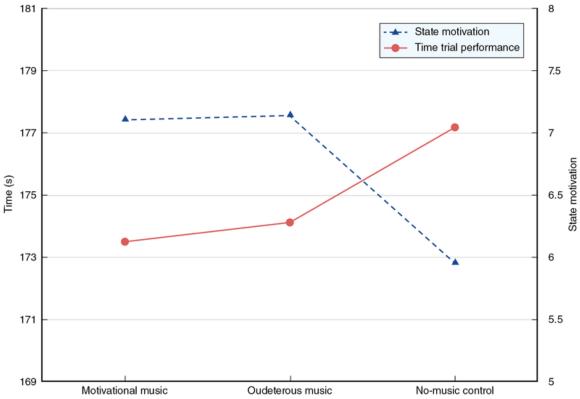Music for swimmers
This is an excerpt from Applying Music in Exercise and Sport by Costas I Karageorghis.
Over the last decade, advances in underwater MP3 technology have led to the popularization of music use in swimming. This sport demands a regular motor pattern and highly rhythmic limb movements and breathing patterns. Rhythmic music can help swimmers set a good rhythm while also distracting them from the monotony of grinding out repetitive lengths in the pool. In partnership with Speedo, my group sought to measure the psychological and ergogenic (work-enhancing) effects of music in an all-out 200-meter freestyle task (Karageorghis et al., 2013). We found that both motivational ("Sexy And I Know It" by LMFAO) and oudeterous ("Howl" by Florence and the Machine) tracks enhanced swimmers' perceptions of state motivation and time trial performance when compared to a no-music control (see figure 7.2). This suggests that, during all-out efforts, athletes may tune in only to the rhythmic qualities of music (Terry et al., 2012). Athletes in all rhythmic endurance sports (e.g., cross-country skiing, rowing, running) can benefit from music, and a strong body of scientific evidence (for reviews, see Karageorghis, 2016; Karageorghis & Priest, 2012a, 2012b) has inspired new types of sporting events (see the sidebar The Run to the Beat Phenomenon).

Time trial performance and state motivation during a 200-meter freestyle task.
Adapted from Psychology of Sport and Exercise 14(4), C.I. Karageorghis, J.C. Hutchinson, L. Jones, H.L. Farmer, M.S. Ayhan, R.C. Wilson, J. Rance, C.J. Hepworth, and S.G. Bailey, "Psychological, psychophysical, and ergogenic effects of music in swimming," 560-568, 2013, with permission from Elsevier.
Find more recommended playlists for a variety of exercise- and sport-specific settings in Applying Music in Exercise and Sport.
More Excerpts From Applying Music in Exercise and SportSHOP

Get the latest insights with regular newsletters, plus periodic product information and special insider offers.
JOIN NOW


